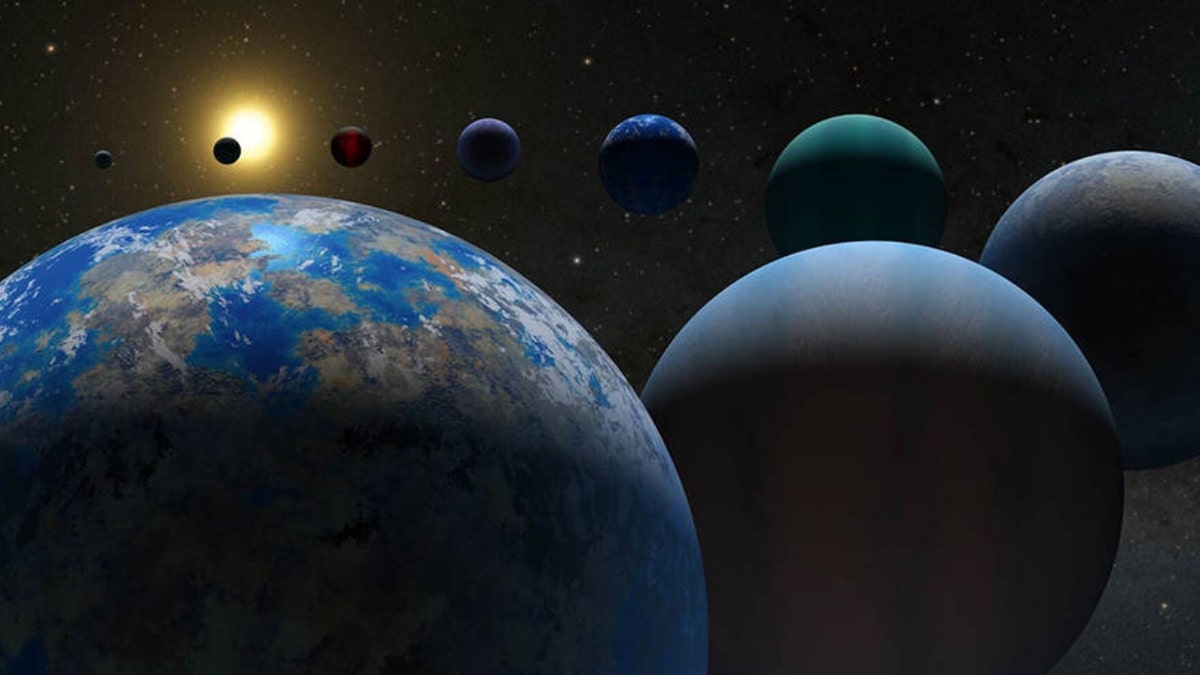Study: Alien planets could be better suited for life than Earth
Alien planets could be better suited for life than Earth
A planetary alignment is reportedly slated for the end of the month.
Mercury, Venus, Mars, Jupiter, Uranus – and our moon – will be visible in the night sky on Tuesday, March 28.
"Don’t forget to look to the sky the end of the month for the planetary alignment which will have at least five planets – plus the moon – all visible in almost an arc shape as seen from Earth," a former Apollo astronaut tweeted earlier this month.
Speaking with "Good Morning America" this week. NASA's Bill Cooke, who leads the agency's Meteoroid Environment Office at the Marshall Space Flight Center, said that the crescent moon is the "capper," and will be halfway lit up just above Mars.
ASTEROID 2023 DZ2 TO PASS BETWEEN EARTH AND MOON THIS WEEKEND
"Perhaps the hardest to see with your eye will be the planet Mercury, [which] will be the one closest to the horizon, and right beside it will be a brighter object, planet Jupiter," he said.

The sun and planets of our Solar System, including Pluto. (Photo by: Education Images/Universal Images Group via Getty Images)
Cooke said that Venus will likely be the brightest planet to see, while Uranus can be trickier to spot.
The last planetary alignment occurred on Dec. 28, 2022, and there will be more events in the future.
On Sept. 8, 2040, Cooke teased an alignment that includes Mercury, Jupiter, Venus, Saturn and Mars.
NASA SEES ACTIVE VENUS VOLCANO FOR FIRST TIME EVER

NASA's Hubble Space Telescope has observation time devoted to Saturn each year, thanks to the Outer Planet Atmospheres Legacy program, and the dynamic gas giant planet always shows us something new. This latest image heralds the start of Saturn's "spoke season" with the appearance of two smudgy spokes in the B ring, on the left in the image. (Credits: NASA, ESA, and Amy Simon (NASA-GSFC); Image Processing: Alyssa Pagan (STScI))
"All of them will be visible within 10 degrees and that'll be pretty darn impressive," he said. "I'm always partial to Saturn because of the rings, right? I mean, who can resist?"
A planetary alignment occurs when several planets form a line – or an arc – as seen from the sun.
There are more planets than stars in our galaxy. There are currently eight orbiting our star.

What do planets outside our solar system, or exoplanets, look like? A variety of possibilities are shown in this illustration. Scientists discovered the first exoplanets in the 1990s. As of 2022, the tally stands at just over 5,000 confirmed exoplanets. (Credits: NASA/JPL-Caltech)
The inner, rocky planets are Mercury, Venus, Earth and Mars. The outer planets are gas giants Jupiter and Saturn and ice giants Uranus and Neptune.
Beyond Neptune, a newer class of smaller worlds called dwarf planets reign, including Pluto. However, thousands more planets have been discovered beyond our solar system. Scientists call them exoplanets. Exo means "from outside."
The count of confirmed exoplanets just ticked past the 5,000 mark, per NASA.





















